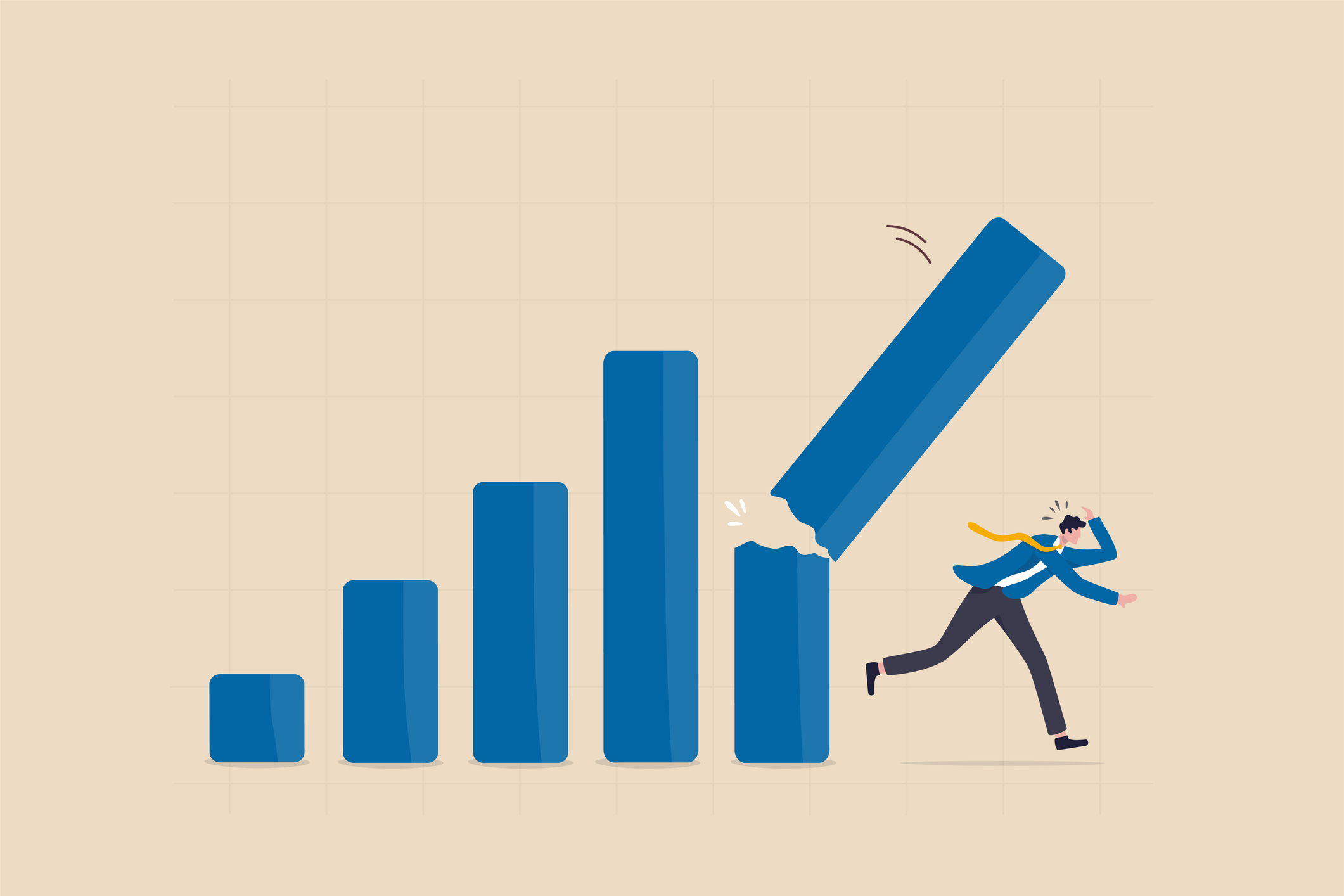What happens to banks in a recession? Previous economic downturns led to layoffs, but maybe not this time.



What happens to banks in a recession? Previous economic downturns led to layoffs, but maybe not this time.

When you land a coveted job at an investment bank, you think you’ve made it. You’ll work long (like, really long) hours, but you’ll also make good money and rub elbows with the business elite. Unless the economy has a different plan.
After years of economic prosperity, financial experts are starting to use a dreaded word: recession. Defined as a period of consistent economic decline, a recession causes companies’ profits to dwindle and financial markets to sputter, while American consumers tighten their wallets. What’s the impact on banks? We’ll lay it all out for you.
What was the Great Recession? How much time do you have? From December 2007 to June 2009, the U.S. economy slipped into its longest recession since WWII. If you’re wondering how the Great Recession affected the American economy, the answer is it had a profound effect. Millions of Americans lost their jobs, homes, and financial stability. Home prices dropped 30% from mid-2006 to mid-2009 and the unemployment rate hit 9.5% in June 2009, according to the Federal Reserve.
The housing market collapse caused the Great Recession. Lenders promoted it, extending subprime mortgages to questionable borrowers, and then banks bundled and resold the debt as mortgage-backed securities. When borrowers couldn’t repay their loans and real estate values tumbled, it created a domino effect across the economy and crippled financial institutions. Government oversight of the banking industry was lax, allowing banks to take on risky investment strategies.
The damage to the banking industry was unprecedented. Renowned bank Lehman Brothers shuttered abruptly, and JPMorgan Chase acquired Bear Stearns with help from the government. Other big names, including Merrill Lynch, AIG, Freddie Mac, and Fannie Mae, had to be bailed out by federal rescue dollars.
To prevent another fiscal crisis, the government extended financial lifelines to financial institutions and tightened banking regulations. Congress passed the Dodd-Frank Act of 2010, which established more oversight and rules for large banks.
Since the recession, banks have changed some practices. They’re less likely to take huge investment risks, and they know they’re subject to more government oversight and scrutiny. They’ve also increased their investment in technology, compliance, and risk management.
A recession can last months or years. Banks can see their profits stagnate or—worst case—drop precipitously during a recession. They’ll resort to layoffs to shore up their finances and tighten operations. That’s why “recession” is one of the most loathsome words in banking.
In recent months, with inflation at the highest levels in 40 years, the Federal Reserve has been raising interest rates to cool the economy. On Wall Street, banks are anxiously awaiting the economic impact. Higher rates can produce mixed results for the banking industry.
If the Fed’s moves work, and inflation declines, banks stand to make a profit. In a recession, higher interest rates cost borrowers more when they take on debt, so banks earn more from lending. And banks can make more on interest from their cash on deposit.
However, by hiking rates, the Fed could trigger a recession, which would be a drain on banks’ investments and profits. A recession forces many Americans to cut back on their spending. Debt costs more than it did even a few months ago. So, car buyers may think twice about taking out a loan on a new Tesla, while homeowners balk at a fat, high-interest mortgage for a new home. It can be difficult for borrowers to repay their existing debt in a recession, and they may not take out new loans.
But it’s not all bad news. After a recession, the Fed typically starts to lower rates slowly, which strengthens businesses and makes it easier for consumers to borrow and spend again. That all boosts banks’ profits.
One economic sign of an impending recession is the U.S. Treasury yield curve. Typically, in normal economic times, longer-term debt, like a 10-year Treasury note, pays out higher yields than short-term holdings, such as a 2-year note. However, when demand for long-term debt outpaces short-term options, the yield can become inverted and short-term debt pays higher yields.
Stay with us here. The yield curve is a measure of economic health, and when there’s an inverted curve, it can signal a looming recession because investors are anxious about long-term prospects. An inverted yield can be a drain on bank profits because it weakens their margins between what they pay to borrow money and what they make lending it to borrowers.
That’s not the only indicator of hard times. Banks’ quarterly earnings are a window into their future and, right now, the news isn’t good. When banks’ earnings fall, industry observers point to impending job cuts. After signaling Q2 losses, Credit Suisse Group AG may consider layoffs, while UBS Group AG is already cutting jobs in some international markets.
Major banking executives have even started to talk about a recession, including Morgan Stanley CEO James Gorman, who recently forecast a 50-50 chance the economy may be headed for a recession, while JP Morgan Chase CEO Jamie Dimon said he was preparing for an economic “hurricane.”
When banks, or really any business, see their profits falling, they look for ways to improve efficiency. That frequently means new technology. In the banking and financial services sectors, digital technology is transforming how banks make investments and communicate with their customers.
While investing in new financial technology during a recession might seem counter-intuitive, it incentivizes banks to modernize their tech. You need to spend money to make money, right? If banks invest in tech during a recession, it can create new jobs in their tech divisions. Of course, if that technology renders some jobs obsolete or reduces the need for workers, it could also lead to layoffs.
After the Great Recession and pandemic-related layoffs in 2020, many investment banks are leaner. As profits soared last year, the competition to hire and keep talented bankers intensified (you’ve heard of the Great Resignation) and banks want to keep their best and brightest. So while the economy is slowing and banks’ business is suffering, executives may think twice about letting go of their staff too quickly.
Few industries are recession-proof. When you go into investment banking, you expect to work long hours, with fat paychecks, but there are no guarantees. If your bank’s profits fall, and it misses earnings estimates for several quarters, no one is safe.
Also, the pandemic has transformed how and where Americans work. Technology and remote work have helped banks become more efficient and, potentially, shave jobs. In a fall 2021 survey of New York employers, 22% of financial services firms said they plan to reduce their New York-based workforce over the next five years.
The good news? Investment banks play a critical role in the economy, and that’s not changing soon. Banks will always need to hire the best and the brightest and compensate them appropriately.
One effect of the Great Recession of 2008 is that the government has more tools to keep the banking industry in check. A more responsible banking industry should, in theory, create a more stable work environment for investment bankers. Just keep your eyes open. When you work in a fast-paced, high stakes industry, you can never really take anything to the bank.